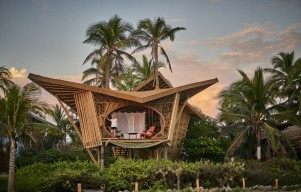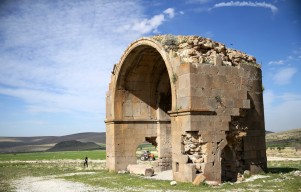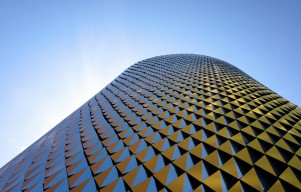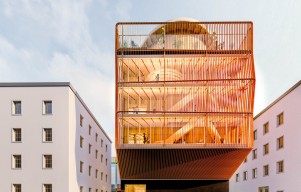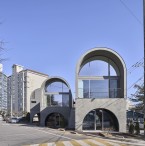(Photo: Photo Courtesy of Riken Yamamoto)
Riken Yamamoto, renowned worldwide for his unmatched architectural genius and avant-garde design philosophy, is receiving the coveted Pritzker Architecture Prize today. Throughout a career spanning more than 50 years, Yamamoto has irrevocably altered urban landscapes and motivated a new generation of architects. To celebrate his extraordinary contributions to the field, we embarked on a retrospective journey through fifteen of his most captivating projects. His visionary creativity and unwavering dedication to excellence are evident in every project.
Yamamoto's unique architectural language, in which "normality becomes extraordinary," is evident in many of the projects in his vast portfolio. These projects feature a tasteful combination of transparency, terraces, and balconies. These architectural elements establish visual connections and play a pivotal role in nurturing a profound sense of community among residents and visitors alike, transcending the boundaries of conventional design paradigms.
1. Yamakawa Villa, Japan (1977)
(Photo: Photo Courtesy of Riken Yamamoto)
Nestled amidst woodland in Nagano, Yamakawa Villa stands as a testament to Yamamoto's early design prowess. Its moss-covered pitched roof and open-air terrace seamlessly integrate with the surrounding landscape, offering a serene retreat in nature's embrace.
2. Gazebo, Japan (1986)
(Photo: Photo Courtesy of Riken Yamamoto)
Gazebo, Yamamoto's self-designed residence in Yokohama, exemplifies his commitment to fostering community amidst urbanization. Open terraces facilitate interaction between residents, countering the isolating effects of urban sprawl.
3. Hotakubo Housing, Japan (1991)
(Photo: Photo Courtesy of Riken Yamamoto)
In his first social housing endeavor, Yamamoto crafted a vibrant community hub with Hotakubo Housing. Sixteen blocks, housing 110 homes, encircle a tree-lined plaza, encouraging residents to forge connections within their shared space.
4. Iwadeyama Junior High School, Japan (1996)
(Photo: Photo Courtesy of Riken Yamamoto)
The Wing of the Wind, a monumental curved wall, serves as a protective shield against strong gusts at Iwadeyama Junior High School. Beyond its functional significance, this architectural feature fosters a sense of identity and pride among students and staff.
5. Saitama Prefectural University, Japan (1999)
(Photo: Photo Courtesy of Riken Yamamoto)
At Saitama Prefectural University, Yamamoto reimagined educational architecture, creating a transparent complex conducive to interaction and collaboration. By blurring the lines between disciplines, he sought to inspire interdisciplinary dialogue and innovation.
6. Hiroshima Nishi Fire Station, Japan (2000)
(Photo: Photo Courtesy of Riken Yamamoto)
A beacon of safety and community engagement, Hiroshima Nishi Fire Station invites public participation in fire safety initiatives. Its glass-clad atrium provides a transparent view of firefighter training, fostering awareness and community resilience.
Also Read: 50 Years of Philippine Design, Architecture, Tradition, and Cultural Heritage
7. Future University of Hakodate, Japan (2000)
(Photo: Photo Courtesy of Riken Yamamoto)
Yamamoto's design for the Future University of Hakodate embraces transparency to nurture knowledge sharing and connectivity. Glass-lined spaces encourage visual connections, fostering a sense of belonging and intellectual exchange.
8. Ecoms House, Japan (2004)
(Photo: Photo Courtesy of Riken Yamamoto)
In Ecoms House, Yamamoto explores the versatility of aluminum as a sustainable building material. The patchwork exterior, composed of aluminum panels with varying configurations, showcases the material's adaptability and aesthetic appeal.
9. Jian Wai SOHO, China (2004)
(Photo: Photo Courtesy of Riken Yamamoto)
Yamamoto's vision for Jian Wai SOHO redefines urban living, blending residential and commercial spaces within a cohesive community framework. Elevated walkways and shared amenities promote social interaction and a sense of belonging.
10. Yokosuka Museum of Art, Japan (2006)
(Photo: Photo Courtesy of Riken Yamamoto)
Inspired by the surrounding landscape, Yokosuka Museum of Art offers a dynamic journey through art and nature. Its sinuous form and underground galleries celebrate the bay's contours while preserving unobstructed views of the scenic vista.
11. Fussa City Hall, Japan (2008)
(Photo: Photo Courtesy of Riken Yamamoto)
Fussa City Hall, with its distinctive cubic volumes and curved brick edges, serves as a modern civic landmark. Designed to integrate seamlessly with its residential surroundings, it embodies Yamamoto's vision of harmonious urban coexistence.
12. Pangyo Housing, South Korea (2010)
(Photo: Photo Courtesy of Riken Yamamoto)
Pangyo Housing epitomizes Yamamoto's commitment to inclusive urban design. Low-rise clusters, interconnected by shared spaces and amenities, foster a sense of community and belonging among residents.
13. Tianjin Library, China (2012)
(Photo: Photo Courtesy of Riken Yamamoto)
With its monumental scale and innovative design, Tianjin Library redefines the concept of public space. Crisscrossing levels and a striking facade invite visitors to explore and engage with knowledge in a dynamic, immersive environment.
14. Koyasu Elementary School, Japan (2018)
(Photo: Photo Courtesy of Riken Yamamoto)
Yamamoto's redesign of Koyasu Elementary School prioritizes connectivity and collaboration, with open terraces fostering interaction among students and faculty. The design reflects his belief in the transformative power of inclusive educational environments.
15. Nagoya Zokei University, Japan (2022)
(Photo: Photo Courtesy of Riken Yamamoto)
At Nagoya Zokei University, Yamamoto creates a versatile artistic exploration and collaboration space. The innovative design, characterized by a lattice facade and flexible studio spaces, inspires creativity and community engagement.
In conclusion, Riken Yamamoto's architectural legacy transcends mere structures, embodying a vision of inclusivity, sustainability, and community. As we celebrate his illustrious career and Pritzker Architecture Prize win, let us embrace his timeless philosophy of architecture as a catalyst for positive social change.
Related Article: Riken Yamamoto Honored With 2024 Pritzker Prize, Renowned for Socially-Minded Architecture
